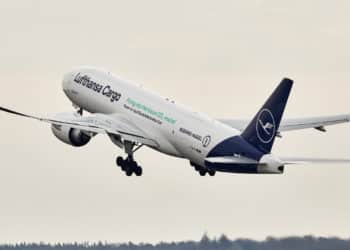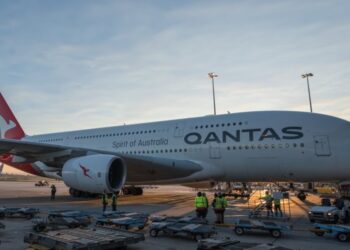No products in the cart.
Cathay sees possible halt to expansion

A year ago, Cathay Pacific Cargo was going full throttle. With the peak season in full swing and the problems at U.S. West Coast ports making shippers twitchy, the airline was filling its planes to the rafters and generating good yields to boot. Buoyed by a strong peak season, Cathay emerged from 2014 with a 12 percent increase in tonnage over the previous year. Moreover, load factors and yields also advanced, as a 10.4 percent boost in capacity was easily outstripped by 15 percent growth in revenue per flown freight mile.
But as we all know, expansion at that pace can’t last forever. Twelve months later the Hong Kong-based airline is filling its freighters again, but the yields are a far cry from a year earlier and the party is not likely to last.
“From a tonnage point we have a peak,” remarked Mark Sutch, general manager of cargo sales and marketing. He added that Cathay had received a fair amount of inquiries about charters, which it could not meet due to commitments on scheduled flights.
In accordance with the historical pattern, rates have also gone up, but not in a magnitude that used to be associated with peak-season hikes in past years. Even this is not likely to last. Sutch expects demand to fizzle out after the first week of December. “I think it will fall off a cliff before Christmas,” he said.
Predictably, the Asia-Europe sector has been the weakest area for Cathay. According to Sutch, there has been a seasonal spike in demand, but not to a point where additional capacity would be needed. Characteristically, the airline has not even bothered to beef up its maindeck capacity on the sector.
“We stick with our schedule of nine weekly flights. In the past we may have taken it up to 11, but we don’t want to undermine our profitability,” Sutch said. He added that all Cathay’s passenger flights to Europe use 777 aircraft, which offer ample cargo capacity.
Across the Pacific, Cathay was going to push its weekly freighter frequency up from 37 to 42 flights. “To North America is where we are really going to see the major peak,” Sutch said.
Stan Wraight, senior executive director of Strategic Aviation Solutions International, predicted that this sector will remain a freighter domain. “You have a lot of new widebody bellyhold capacity coming on there as well, but it’s a drop in the bucket in terms of the volumes that continue to come out of Asia,” he noted.
Cathay’s capacity has kept climbing as the carrier replaced 747-400 freighters with747-8Fs, but this curve is nearing its finale. The airline is due to get one more 747-8F next August. “That’s where we really want to be with freighters,” Sutch said.
If anything, there is a chance of some contraction. As new widebody passenger planes are deployed on intra-Asian sectors, some 747-400Fs will be withdrawn from that arena. “We will either move them to the trans-Pacific or see if the fleet is too big,” Sutch said.
Cathay stands to receive twelve A350s in the coming year. These planes will offer 17 to 18 tons of cargo capability, Sutch pointed out.
“I don’t think we will open any new freighter destinations,” he remarked. “In the U.S., we have all the big gateways covered, and some more. In Europe, we have lots of belly capacity.”
Instead of boosting its lift, the airline is looking to raise its game in terms of service capabilities. One piece in that puzzle will be a new reservation system that is due to come online this coming summer. The system should enable the carrier to act faster in terms of pricing and booking. “The system we are replacing is 30-odd-years-old,” noted Sutch.
Like other carriers, Cathay has been honing its capabilities to handle special types of cargo, with pharmaceuticals a particularly fast-growing sector. The airline had done particularly well on its routes to Europe and to Australia.
“We will put a lot of focus on India in 2016 and 2017,” said Sutch, adding that Cathay will pursue Indian traffic, both to other Asian destinations and to the U.S.
Perishables have established themselves as another growth segment, notably flows into China. Cathay has been carrying large amounts of chilled and frozen beef and dairy products from Australia to China. “We also see a lot of growth in perishables from Mexico and the U.S.,” he added.
Another major focus will be on mail, namely in conjunction with e-commerce. “We see a spike in mail, also traffic from forwarders with package consolidations,” Sutch said.
Unlike some carriers that are experimenting with more direct forms of involvement in e-commerce, Cathay is concentrating on cooperation with postal agencies in this arena, particularly with Hong Kong Post, China Post and the Royal Mail in Britain. The carrier has introduced mail scanning capability across its network, which should help its efforts in this area.
Photo: Alex Kwanten















